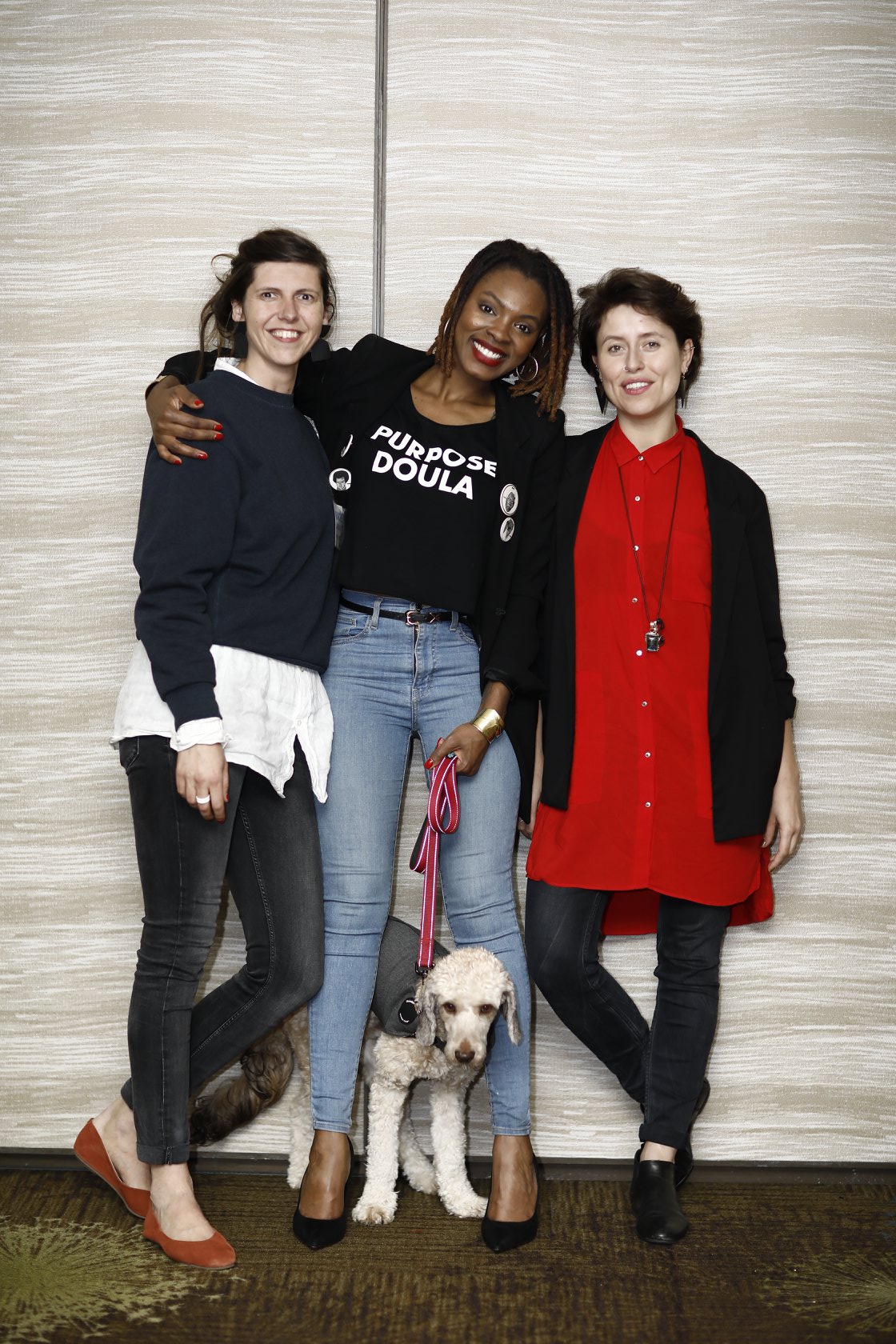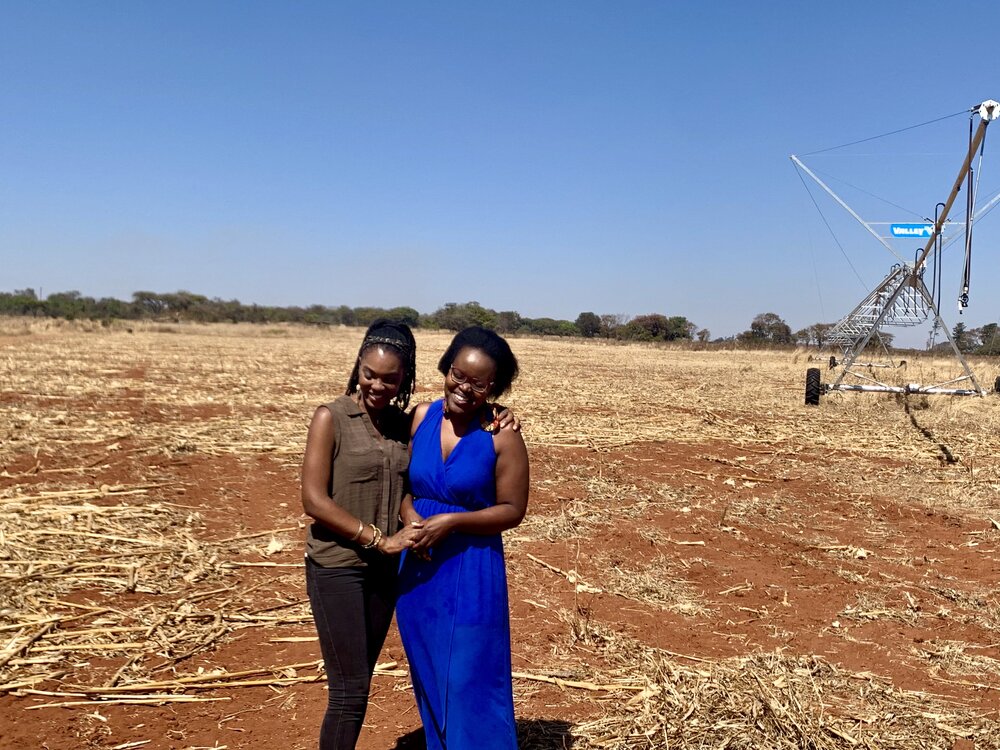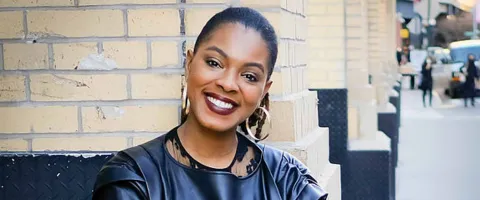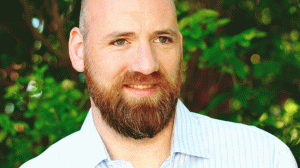“new visions in conversation" is a series dedicated to talks about love and justice, truth and power, and paths to spiritual and political awakening with inspiring leaders and role models, whose work and everyday practices bring us closer to one another, acknowledgment of our interconnectedness, and justice for all.
Rachel D. Latimore is a multi-passionate entrepreneur, social impact leader & researcher, speaker, and coach. Currently, she leads the design and programmatic strategy work for building a deeply collaborative and equitable community and culture of nearly 1,000 global Fellows across 86 countries at Echoing Green, a social innovation fund and leader in the social impact space for over 30 years.
Agnieszka Bułacik: There is this hunger in me for new, and more, models of transformational leadership that could also expose how diverse it can be. When we met, I was and still am so impressed by your way of leading us all as Echoing Green fellows. How did you come to think about yourself as a leader? What was the path that brought you into being interested in what leadership is?
Rachel D. Latimore: For me, leadership was not so much a position that you obtain or this place that you hold, but it was more of a lifestyle. I come from a family of primarily women who are leaders, and I was placed into opportunities, even at a very young age, where I learned about the ability to influence, to encourage, to inspire, and amplify. When I think about leadership, all of those things still come to mind. It's not about you necessarily having to own something for the sake of control, but it really is an opportunity to serve.
How do you get to show up for people? How do you get to serve? By showing and guiding and walking alongside, right!? And learning. I truly believe that leadership is really about learning because the more I'm able to stretch this learning muscle, the better I'm able to understand how do I serve people better, how do I support and encourage and amplify and uplift? And in doing so, it supports me as a person myself, I learn from other people, I get a chance to have this exchange.
AB: So walking further this path of leadership being an encouragement, an inspiration, being in a connection with others, one of the aspects that we try to explore deeper is the collective aspect of leadership. What are your thoughts about collectivising leadership or what collective leadership can be?
RDL: I think it's such an important concept to discuss and think about because Western culture tells us that it's this heroic form of leadership that advances things. But when you step back and you look at culture, you look at it from anthropology, social work, or community development perspective, then you see: it really is communities that shift culture and hold this notion of leadership, right?! It comes from this communal aspect.
And as I think about why taking a collective approach to leadership matters, and as I try to explain it to other folks about why I prefer a collective model of leadership is because no one person is an island, and you can’t operate in a silo. You can't operate in isolation and do that effectively if you're trying to create change, if you're trying to support movements, if you're trying to move an agenda forward. No one person can do that. It really does take a community.
When you step back, and you think about people who have shared interests and shared values and shared commitments to making sure that people feel seen, and that they belong, that they feel heard, that they feel like they have a place: that's where leadership really shows up! That's the moment where you're able to really step into a community and share with folks that the only way that this work can happen is if I do it in partnership with you, if we do it together, if we do it in community.
And that's really what I love about the work that you're doing with new visions: you recognize that it can't just be one person, it really has to be a community that goes along on this journey together. We are banding together for the sake of humanity and justice and innovation, and civil rights, and all of these things that help to advance our lives and our cultures and our societies moving them forward. There's so much more victory that you experience because it's not dependent upon one person's ideology, one person's thought process, but it really is about what the collective say, because there are so many different gifts in the community. And when you pull those gifts together, you have more resources, you have more capacity, more bandwidth to really get the work done.

AB: When we talk about collectivizing leadership, what are your ideas to break through this concept of the individual heroic leader on the front? How to practically break this individualistic approach towards leadership? Do you have any ideas or practices that you invite into your work and world that help you challenge that?
RDL: Right now, I'm doing a lot of research around what is this notion around affinity groups, communities of practice. community-based models, professional learning communities, and all of these are spaces where there are multiple leaders. There's a space for multiple leaders and people to get a chance to collaborate, share ideas, share thinking and thought processes, they challenge each other... What I am finding in my research, and what the research is showing is that when people feel like they belong, when people feel like there is actually a curated space for themselves there are emerging leaders that show up that you would not be able to see and traditional heroic leadership spaces.
Because not everybody shows up as a charismatic person who is able to sit in front of a room with people and speak without being nervous. Not everyone shows up with years of experience leading groups, with titles and positions and those kinds of things, but that does not negate the capacity for other people to lead.
What shows up as being super important to understand in this collective framework is that leadership manifests in different ways, there is not a particular type of leader. In the civil rights movement in the United States, there were leaders who were on the frontlines and marching. But then there were women who were at home, who were cooking meals for the children to eat, and making sure that folks were learning so that they could continue to go to school, etc. There were other parts of the movement that aren't as sexy that people don't see. And it takes leadership to get those done. And it takes leadership, to be able to facilitate, to keep stability, while other people are on the frontlines fighting in the fight. I think that's why the collective model of leadership is important - because everybody has a role.
And if you create spaces, like affinity groups, or communities of practice, or professional learning communities, it validates that and it says that everybody has a place here, everybody is welcome. Everyone belongs. And everyone's voice matters in this conversation.
What we're seeing is that where there are spaces for these groups to be held and emerge, you see higher success rates because people are approaching it rather from a collective model than just from one single leader trying to influence or move a group of people.

AB: Yeah, and how much self-reflection and courage it takes to challenge it. I'm wondering, being very aware that we live in a world that is structured in an unequal and violent way and is privileging some people over others because of gender, skin color, sexual orientation, body ability, etc. how much effort does it take to infuse ideas of collective leadership? How can we normalize the practices of sharing power, knowing that there are certain privileged people that are oftentimes unaware of their position and/or not interested in change? How to infuse those practices in the structures that are so stiff and so comfortable with the business-as-usual?
RDL: It is challenging, I will just first name that, particularly speaking from approximate experience as a Black woman in America. It is challenging to push that envelope and to say, “Hey, there's another way that we could be doing this”. I think a lot of it is around increasing access to the table. And I don't just want to sit at your table, but I want to know, and I want to experience that my voice, that my thoughts, that the brilliance that I bring to the table has space. I am not sitting at this table for aesthetic purposes, but I need to have space, autonomy, the capacity to be able to use my voice for change, the right to use my voice as a voice of influence. And I'm not going as myself, but as Maya Angelou said in her poem “I come as one. But I stand as ten thousand”.
I may show up in a space, but know that I am not showing up just as myself. I am carrying the voices, the hearts, the dreams of people that I am in community with.
It is about creating more space. When I get to the table, my voice then opens the door for more people to enter into the room.
When you are in some of these very Western constrained environments, a huge part of it is in pushing for the invitation to sit at that table. And Shirley Chisholm said it best: “If they don't give you a seat at the table, bring the folding chair”! So sometimes I don't even need an invitation, but what I am going to do is press for space. Not just for myself, but I will be pressing for space, so that I can create more space for other people, for the community that I am in a relationship with to be able to come to this table as well! Or in another case, we can say: “Hey, listen, you sit at that table, but we have a table over here, and we'll welcome you to this table! If you're open to these ideas, to humanity, to justice, to righteousness, and all of the things that help to advance our cultures and our societies to move forward”.
And sometimes you can create space, but sometimes you can't. And you got to know how to direct your energy. You got to do this cost-benefit analysis: is it worth me having to fight so hard just to get at this table? What happens as a result of me being at this table?
If the benefit outweighs all of the challenges, then yes, press in that direction. But if you realize that you will have to conform and assimilate, and you have to dumb down and you have to water down - you don't need that table!
You create your own table, and you create your own space, which is what you women are doing. You're creating your own space for people to be invited in, so that you can teach, so that you can lead from that, so you can educate, so that you can create a community around that.
The series is brought to us by members of new visions - an educational collective supporting cultural practitioners, change-makers, communities, and organizations in adopting new practices and approaches to become more equitable and inclusive and focusing on what leadership is and how collective leadership can look and feel like. You can read the rest of the interviews here.










